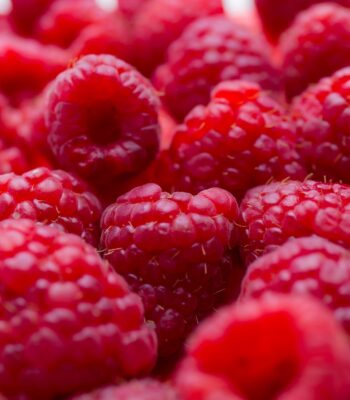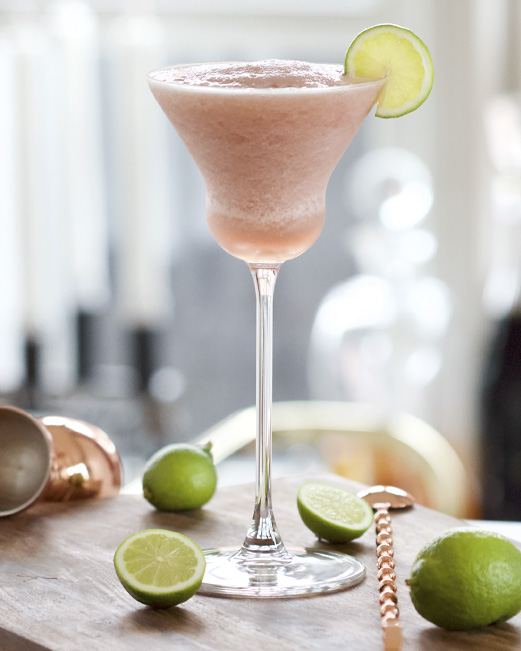Fruit syrup
Fruit syrups are basically just a simple syrup with fruit flavour. Thus, it is almost as simple to make at home as a regular simple syrup. The process is more or less the same, however, for fruit syrup you simply add pieces of the desired fruit to the mixture while heating. All you need in order to make a batch of fruit syrup is:

Ingredients
- 1 dl. water
- 175 grams of sugar
- Approx. 175 grams of fruit (depending on desired intensity)
How to make
Depending on the fruit you want in your syrup you will need to simmer the mixture for some time. Fruit syrups can be made with almost every fruit you want. When the fruit is fairly soft, such as pineapple, banana, raspberry, or strawberry all you need to do is to cut the fruits into pieces, add them to the casserole and let the mixture simmer for 10-20 minutes. The longer you let it simmer, the less water will be in the syrup and the thicker it will be. It will also contain more of the fruit flavour.
If however, the fruit you want to use is of a harder kind, such as ginger or coconut, you should let the mixture simmer for a longer time to make sure you get enough flavour into the syrup. To be able to simmer the mixture for a longer time, you should aim at ending up with an inverse simple syrup (2 parts of sugar, 1 part of water). Take ginger syrup as an example. Here you would start by peeling the ginger and cutting it into pieces. Next, add the ginger, 2 parts of sugar and 1 part of water to the casserole. Now, use a knife (or a spoon or something else) to measure the water level. Place the end of the knife on the bottom of the casserole and make a mental mark for where the water reaches. This is the amount of syrup you’ll want to have left once you are done. Then add 1-1,5 additional part of water to the casserole. This will allow you to simmer the mixture for a longer time before reaching the previously noticed waterline. The reason for doing this is that the water will evaporate as you boil/simmer the mixture, and by adding more water, it can simmer for a longer time, meaning that the syrup will be richer in flavour. Bring the mixture up to temperature on medium heat while stirring once in a while to make sure that the ginger doesn’t stick to the bottom of the casserole. Once in a while check the waterline with the knife to see if the mixture has simmered for long enough. Depending on how much water you used, it could take between 30-60 minutes. Avoid turning up the heat too much as the syrup could end up tasting burnt. Once you roughly reach the waterline, take it off the heat. Pour the syrup into a scalded bottle through a fine meshed sieve. You should not pour it through a coffee filter, as you want some of the particles in the ginger syrup in order to get the maximum flavour.
Common for all fruit syrups is, that the more fruit you use and the longer time you let it simmer, the more fruit flavour will come through in the syrup. Therefore, you should always taste your homemade syrup before using it in a cocktail to ensure you get the right amount of fruit flavouring.
In some fruit syrups you may experience sediments. This is not a bad thing. It is simply a sign of a product made with high quality ingredients. Just shake the bottle before use. Most syrups, both simple and fruit syrups, can last for 3-6 months in the fridge (maybe even longer). It is easy to see if a syrup has gone bad, as there will be white mould on top. Rinsing your bottles in boiling water or sodium benzoate (Atamon) helps preserve the syrups.


